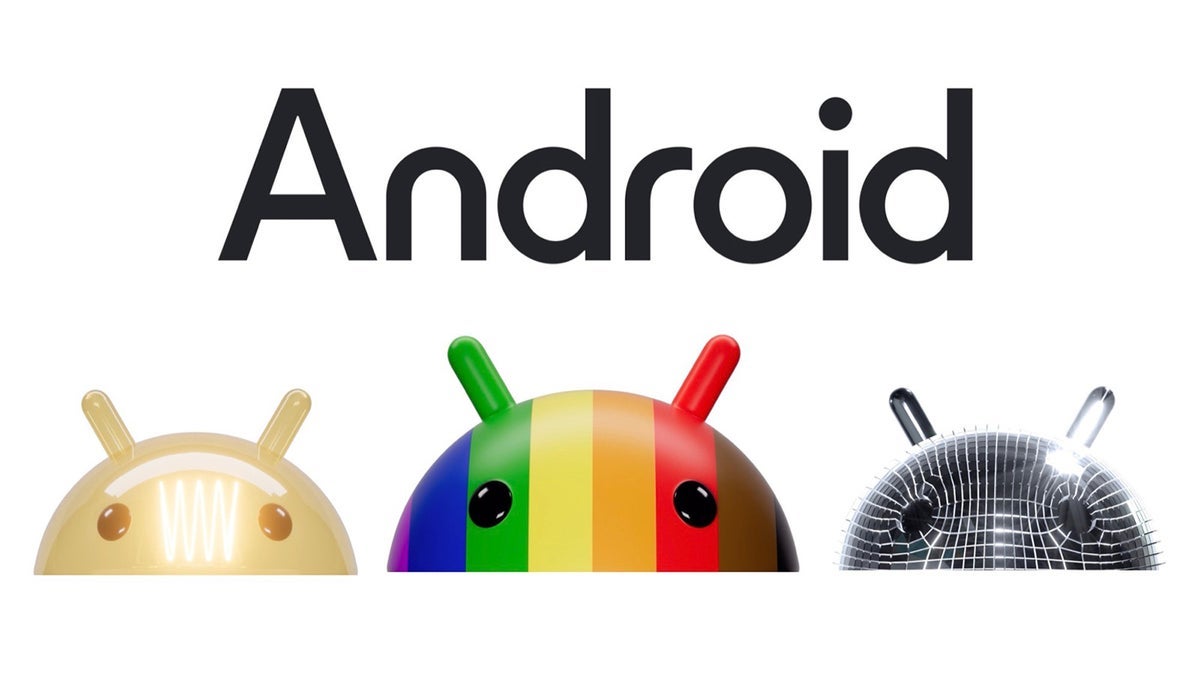:::tip
Please use a web browser on a laptop/desktop for the best viewing experience for this article, as this article contains a lot of visually pleasing ASCII artwork for better learning. Thank you.
:::
Introduction
Software development is essential. Everything runs on code, and building a prototype is a necessary step. In a way, software is the physical manifestation of the programmer’s mind.
It’s quite difficult to get started with development. You need experience to code well, and you have to code well to gain experience. It’s an undesirable Catch-22.
Breaking the Catch-22 with Framework
================================================
Skill
Level
^
| *Framework-Guided Path*
| /
| /
| / <-- Accelerated Growth
| /
|/_____ *Traditional Path*
+-------------------------> Time
Key: Framework shortcuts the
experience-to-skill gap
Diagram 1: Breaking the Catch-22
However, the following is a framework I’d like to provide that can help you develop fast. I will skip the product strategy and ideation part, as that deserves its own article.
Framework
Without further ado, the framework:
1. Decide on the technology stack. What’s in the front-end, what’s in the backend, which database, what kind of API? Then, decide on your tools.
While deciding, consider the following:
-
a) Homogeneity & Compatibility: Your software should be easy to build and maintain. Select a general-purpose language that can be utilized to get the maximum features you want and support different layers of the stack. While the layers of the design are disparate, you should have a low-latency method for these components to talk with each other.
-
For example: JavaScript is the language of the frontend in frameworks like React and Angular. It can also be used on the backend with Node.js and Express. It’s the basis for data formats like JSON, which in turn are used by APIs (like GraphQL) and databases (like MongoDB, which uses a JSON-like structure). By leveraging npm (which is like a JavaScript App Store), you can install thousands of libraries for your project.
-
b) Scalability: What you intend to develop must be Scalable. This is critically important. Choose a framework that is used by top multinational corporations (MNCs), or even better, one developed by an MNC.
-
For example: React and GraphQL were created by Facebook, and they use them internally, so you know they are scalable. On MongoDB’s website, you can find that Google, among other companies, is one of its partners – so you know it’s scalable. You can also look at a tool’s GitHub repository and community support; the more, the better. Finally, you can also see if a major cloud provider supports your development stack, as it’s helpful when you intend to scale after the initial development/ or if you need help with quick prototyping of the software that is being developed.
Measuring Community Support
=======================================
[Technology/Framework]
|
+--------+--------+--------+
| | | |
v v v v
GitHub Stack npm Reddit/
Stars Overflow Downloads Discord
| | | |
v v v v
>1K+ >1K >100+/ Active
Qs week Community
| | | |
+--------+--------+--------+
|
v
[Strong Ecosystem ✓]
Diagram 2: Measuring community support
Homogeneous vs Heterogeneous Stack
==============================================
HOMOGENEOUS (Good):
JS → JS → JS → JS
✓ Easy to maintain
✓ Low context switching
✓ Unified tooling
HETEROGENEOUS (Complex):
Python → Java → PHP → Ruby
✗ Multiple paradigms
✗ Different toolchains
✗ Team expertise split
Diagram 3: Homogeneous vs Heterogeneous Stack
Scalability Validation Checklist
============================================
Technology Choice: [React]
☑ Used by MNCs?
→ Facebook, Netflix, Airbnb ✓
☑ Large Community?
→ 240K+ GitHub stars ✓
☑ AWS Support?
→ AWS Amplify supports React ✓
☑ Active Development?
→ Regular updates ✓
Result: SCALABLE ✓✓✓
Diagram 4: Scalability Validation Checklist (React, AWS, for example)
AWS Service Support
================================
Your Stack AWS Service
────────── ───────────
React/Angular → CloudFront
| Amplify
| S3 Hosting
v
Node.js/API → Lambda
| Elastic Beanstalk
| EC2
v
MongoDB → DocumentDB
|
v
[Fully Supported!]
If AWS supports it,
it's production-ready!
Diagram 5: Cloud services support (AWS, for example)
API Architecture Choice
====================================
REST API:
GET /users/1 → Full User Object
GET /posts/1 → Full Post Object
(Multiple Requests, Over-fetching)
GraphQL:
query {
user(id: 1) {
name
posts { title }
}
}
(Single Request, Exact Data)
┌──────────────────────┐
│ Facebook uses │
│ GraphQL internally │
│ = Proven at Scale │
└──────────────────────┘
Diagram 6: The case for GraphQL
2. Leverage open source. GitHub. GitLab. Bitbucket. Open source is a valuable resource to modern-day developers. Use it. If you’ve thought of an idea, there’s a good chance someone else has already implemented it (we can’t always be that original, right?). Look at their code. Understand it. Use it, improve on it. Give credit where it is due, and you should be just fine. This will help you fast-track development and aid in quickly bootstrapping projects. You can use the saved time for thinking about better features.
Standing on Giants' Shoulders
=========================================
[Your Innovation]
|
╔═════╧═════╗
║ You ║ <- Your contribution
╠═══════════╣
║ Library A ║ <- Open source tools
╠═══════════╣
║ Library B ║ <- Previous work
╠═══════════╣
║ Library C ║ <- Community effort
╠═══════════╣
║ Core Lang ║ <- Foundation
╚═══════════╝
Don't reinvent the wheel!
Build on existing solutions.
Diagram 7: Building upon Open Source
Time Investment Comparison
======================================
Build From Scratch:
├─ Research: 40 hours
├─ Architecture: 30 hours
├─ Implementation: 120 hours
├─ Testing: 40 hours
├─ Debugging: 50 hours
└─ TOTAL: 280 hours (7 weeks)
Using Open Source:
├─ Search: 2 hours
├─ Understand: 8 hours
├─ Integrate: 6 hours
├─ Customize: 10 hours
└─ TOTAL: 26 hours (3 days)
SAVINGS: 254 hours (6+ weeks!)
↓
[Use for Features]
Diagram 8: Time saved is time earned (example scenario)
Common Open Source Licenses
=======================================
MIT License
├─ ✓ Commercial use
├─ ✓ Modification
├─ ✓ Distribution
└─ ✓ Private use
[Most Permissive]
Apache 2.0
├─ ✓ Patent protection
├─ ✓ Commercial use
└─ ! State changes
GPL v3
├─ ✓ Strong copyleft
├─ ! Must open source
└─ ! Derivative works
[Most Restrictive]
Always check before using!
Diagram 9: Common Open Source Licenses
Repository Quality Checklist
=========================================
╭───────────────────────────────────────╮
│ Evaluating: [repository-name] │
├───────────────────────────────────────┤
│ [ ] README with clear instructions │
│ [ ] License file present │
│ [ ] Active maintenance (commits) │
│ [ ] Issues being addressed │
│ [ ] Good test coverage │
│ [ ] Documentation/Wiki │
│ [ ] Examples provided │
│ [ ] High stars-to-forks ratio │
│ [ ] Contributors > 3 │
│ [ ] Release/version tags │
├───────────────────────────────────────┤
│ 7+ checked = Safe to use! │
╰───────────────────────────────────────╯
Diagram 10: Repository Quality Checklist
Smart Development Strategy
===============================================
[ Your Idea ]
|
v
< Is it novel? >
/
[ Yes ] [ No ]
| |
| v
| < Someone built it? >
| |
| [ Yes! ]
| |
| v
| [ Use their work ]
| [ + Attribution ]
| |
+----------+-----------+
|
v
[ Add YOUR unique value ]
├─ Your UI/UX
├─ Your features
├─ Your integration
└─ Your innovation
|
v
[ Ship Product Faster ]
Originality ≠ Reinventing
Be original where it matters!
Diagram 11: Smart Development Strategy
3. Choose a proper coding environment. You don’t always need a Mac or Linux for programming; you have good options on Windows, too. You can choose a good code editor like VS Code, Sublime Text, etc. Please create a GitHub repository to back up your code. You can create a private repository if you don’t want anyone else to know what you’re up to. Use a syncing application like GitHub Desktop so you can work on your local machine and push the code to GitHub seamlessly.
The Complete Coding Environment
============================================
╔════════════════════════════════════════╗
║ YOUR DEVELOPMENT SETUP ║
╠════════════════════════════════════════╣
║ LAYER 1: Operating System ║
║ ┌──────────────────────────────────┐ ║
║ │ Windows / macOS / Linux │ ║
║ └──────────────────────────────────┘ ║
╠════════════════════════════════════════╣
║ LAYER 2: Code Editor ║
║ ┌──────────────────────────────────┐ ║
║ │ VS Code + Extensions │ ║
║ │ • Prettier, ESLint │ ║
║ │ • GitLens, Live Server │ ║
║ └──────────────────────────────────┘ ║
╠════════════════════════════════════════╣
║ LAYER 3: Version Control ║
║ ┌──────────────────────────────────┐ ║
║ │ Git + GitHub Desktop │ ║
║ └──────────────────────────────────┘ ║
╠════════════════════════════════════════╣
║ LAYER 4: Cloud Backup ║
║ ┌──────────────────────────────────┐ ║
║ │ GitHub Repository │ ║
║ │ (Public or Private) │ ║
║ └──────────────────────────────────┘ ║
╠════════════════════════════════════════╣
║ LAYER 5: Language Runtime ║
║ ┌──────────────────────────────────┐ ║
║ │ Node.js, Python, etc. │ ║
║ └──────────────────────────────────┘ ║
╚════════════════════════════════════════╝
| |
v v
[Local Code] [Cloud Backup]
Professional Setup Complete!
Diagram 12: Example of an environment setup
Command Line vs GitHub Desktop
===========================================
COMMAND LINE: GITHUB DESKTOP:
═══════════════ ═══════════════
$ git init Click "New Repo"
$ git add . Check boxes
$ git commit -m "msg" Type message,
click "Commit"
$ git remote add origin Paste URL,
<url> click "Add"
$ git push origin main Click "Push"
$ git pull Click "Fetch"
$ git log See "History" tab
Learning Curve: Learning Curve:
████████░░ 80% ██░░░░░░░░ 20%
Both work! Choose comfort level.
Diagram 13: CLI vs UI
Managing Repository Privacy
========================================
[New Repository]
|
+------+------+
| |
v v
┌────────┐ ┌────────┐
│ PUBLIC │ │PRIVATE │
└───┬────┘ └───┬────┘
| |
v v
Visible to: Visible to:
• Everyone • You
• Employers • Invited
• Portfolio • Team only
| |
v v
Can switch Can switch
to Private to Public
(anytime) (anytime)
| |
+-----+------+
|
v
Settings > Danger Zone
|
v
"Change visibility"
Start Private → Go Public
(Common Strategy)
Diagram 14: Managing Repository Privacy
4. It is completely okay to “Not Know.” You can do this! However, if you try to dig into the documentation of individual components or frameworks, you might spend years completing one tutorial. Instead, choose a book or a video tutorial that synthesizes these components – something that helps you develop a good project combining all these technologies. Refer to the “Awesome Lists” available on GitHub. Follow experts on X. Join reddit communities. Read blogs and sample project tutorials. Search for articles using “daily.dev/hackernoon/dev.to/freecodecamp”. Read. Read. Develop. Read. Develop. Develop. Develop.
The Documentation Rabbit Hole
=========================================
[Want to Learn React]
|
v
Read React Docs
|
+-------+-------+
| |
v v
Hooks Docs JSX Docs
| |
v v
useState Docs Babel Docs
| |
v v
useEffect Webpack
| |
+-------+-------+
|
v
[6 months later...]
[Still in docs, no project!]
BETTER APPROACH:
[Tutorial Project] → Learn by doing!
Diagram 15: The Documentation Rabbit Hole
Effective Content Discovery
=========================================================
[ Need to Learn XYZ ]
|
v
+---------------------------------------------------------+
| Step 1: Run Parallel Searches |
+----------------+----------------------+-----------------+
| Platform | Action | Refinement |
+----------------+----------------------+-----------------+
| Google | Search keywords | "XYZ tut 2025" |
| daily.dev | Browse feed/tags | Filter by tag |
| Reddit | Find recent posts | Sort by "Top" |
| YouTube | Find recent videos | Sort by views |
+----------------+----------------------+-----------------+
|
v
+---------------------------------------------------------+
| Step 2: Consolidate & Vet Results |
| (Compare 3-5 top links) |
+---------------------------------------------------------+
|
v
+-----------------+---------------+
| |
v v
< Is it recent? > < Is it complete? >
(e.g. 2024+) (Has full examples)
| |
+----------------+----------------+
|
v
[ Start Learning! ]
Diagram 16: Effective Content Discovery
5. Finally, continuously think about how you can improve your project. How can you develop more features? What features can you develop? Bounce your ideas off of people and get good feedback. Look at Product Hunt, a16z, AngelList, etc. to get good ideas. Listen to podcasts. But eventually, develop. Code passionately.
Multi-Channel Feedback Strategy
===========================================
[Your Application]
|
Collect Feedback From:
|
+-------+-------+-------+-------+
| | | | |
v v v v v
Users Friends Reddit GitHub X/
Issues Twitter
| | | | |
v v v v v
Real Honest Public Bug Quick
world opinion discus- reports reactions
usage sions
| | | | |
v v v v v
What Improve- Feature Tech Viral
works ments requests debt features
| | | | |
+-------+-------+-------+-------+
|
v
[Prioritized Roadmap]
Listen > Ego
Diagram 17: Multi-Channel Feedback Strategy
Sources of Product Inspiration
==========================================
[Your Project]
|
What features next?
|
+---------+----------+---------+
| | | |
v v v v
┌─────────┐┌──────┐┌─────────┐┌────────┐
│ Product ││ a16z ││AngelList││Podcasts│
│ Hunt ││ Blog ││ ││ │
└────┬────┘└───┬──┘└────┬────┘└───┬────┘
| | | |
v v v v
Trending VC Startup Expert
Products Insights Trends Advice
| | | |
v v v v
User pain Market Business Best
points trends models practices
| | | |
+----+----+----+---+----+----+
|
v
[Feature Ideas List]
[Innovation Backlog]
Diagram 18: Sources of Product Inspiration
Summary
I hope this article helps you in your programming journey, thank you for reading my article.
If you have any questions, please feel free to send me an email. You can also contact me via LinkedIn. You can also follow me on X.
You can read my article on System Design here.
You can read my article on DevOps here.
If you want me to write on any other topic, please let me know in the comments.
Link to my HackerNoon profile.












